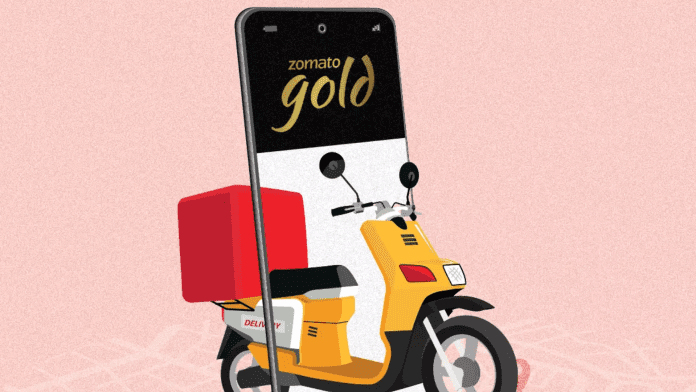While Zomato’s loyalty program Gold, which underwent a relaunch in January this year, continues to boost the company’s sales, analysts and experts suggest that adjustments may be necessary to mitigate its impact on the company’s profitability. They emphasize that while loyalty programs are vital for retaining customers, it’s equally important for the program’s financial viability to be sustainable in the long term.
Read More: Zomato Gold Loyalty program sees remarkable success with 38 Lakh members in just three quarters
The programme is attractive and may help the company win the market share game… but it needs to be accretive on the margins after a point,” commented an analyst based in Mumbai.
In the company’s earnings report for the September quarter, released on a Friday, Zomato’s Chief Financial Officer, Akshant Goyal, revealed that Gold members accounted for 40% of Zomato’s gross order value (GOV) for food delivery.
However, “a Gold order is less profitable than a non-Gold order due to the impact of programme benefits,” he had said. “The delivery charges paid by the customer are almost negligible (due to the free delivery benefit for orders above a certain value),” Goyal had noted in Zomato’s letter to its shareholders.
In the quarter ending on September 30, the company disclosed a net profit of INR 36 crore, marking a notable rise from its previous quarter ending in June when it achieved its first-ever quarterly net profit, which amounted to INR 2 crore.
Read More: Zomato reports remarkable surge in profit, achieving second consecutive profitable quarter in FY24
Also Read: Zomato turns profitable in Q1 FY24, reports INR 2 Cr consolidated PAT
“There is some assurance in the fact that loyal customers are ordering and are ordering more… but it is important that drag on food delivery margins does not turn into value eroding,” said an analyst. “I’m sure the company has plans to turn some levers that could increase margins from Gold customers without affecting the growth… That’s where the focus is required.”
The analyst emphasized that the company’s strategy of using discounts to promote Gold adoption resulted in a membership increase that exceeded their initial expectations.
“The adjusted ebitda (earnings before interest, taxes, depreciation and amortisation) margin for food delivery expanded marginally in Q2 compared to Q1 (from 2.5 to 2.6 percent)…this was likely to come in higher if not for the added discounts,” the person said.
Swiggy, a competitor of Zomato, offers its own subscription service known as Swiggy One, which offers advantages within the food industry. These benefits also apply to their quick commerce platform, Instamart. However, Zomato Gold benefits are not applicable to their quick commerce division, Blinkit.
According to a research note from UBS Securities dated October 4, Zomato has recaptured the majority of the market share it had lost to Swiggy since the relaunch of its loyalty program, as evidenced by data from the first six months of 2023. The report highlighted that in the latter half of the 2022 calendar year, Zomato experienced a decline in market share to Swiggy. This was primarily due to the suspension of the Gold program and Zomato’s increased emphasis on profitability.
In order to promote Gold adoption, Zomato has employed a strategy of offering the subscription at discounted rates. However, the company has mentioned that this strategy is likely to undergo modifications. During the analyst call following the earnings report on Friday, Goyal suggested that the rate of membership growth for Gold was anticipated to decelerate.
As of September 30, the company disclosed a Gold membership count of 3.8 million, a significant increase from the 2 million reported in the previous quarter. In contrast, Swiggy One’s subscriber base was reported to be in the “low-single-digit millions” as of late August, according to an informed source.
“Zomato Gold is a fairly new programme, and the idea is to keep the programme affordable for our customers and make sure they are loyal to our platform,” Zomato’s CFO said. “We expect the pace of increase in gold membership to slow down from here on… These are usually the more frequent customers who want to become members, so from here on that pace will slow down.”
The company acknowledged that its cost per order for Gold customers was elevated due to various factors, including increased delivery expenses stemming from longer average delivery distances, priority service provided to Gold members during peak hours, and the additional costs associated with the no-delay guarantee benefit. To stimulate Gold membership adoption, Zomato has been offering the subscription at reduced rates, some as low as INR 49 for a three-month period to select customers.
“I think one (aggressive Gold pricing in response to competition) is past and the other (contribution margin from Gold expected to improve) is the future. From here on, we expect the delta in margin between a gold and non-gold order to reduce,” Goyal said. “I think we have a good handle on those things by now, and hence we can be sharper in terms of pricing more effectively going forward.”





